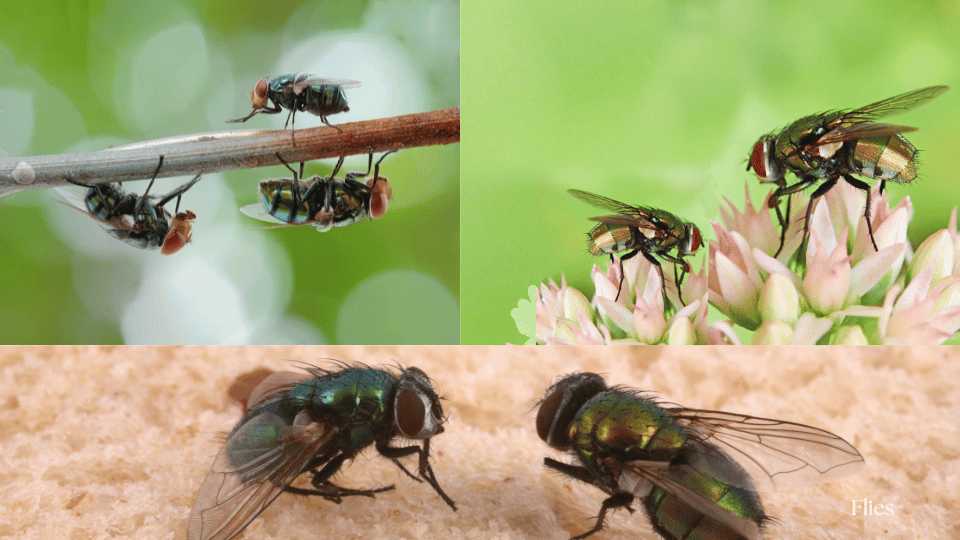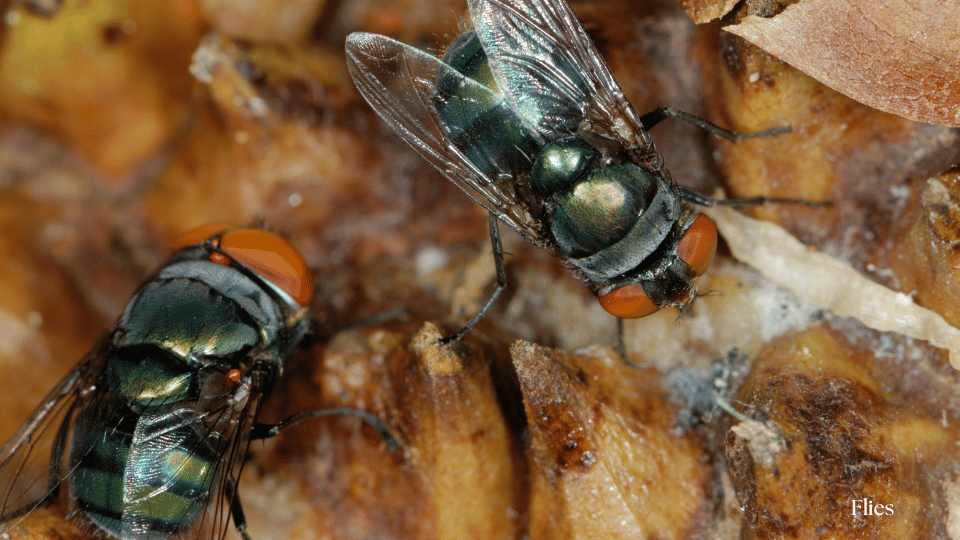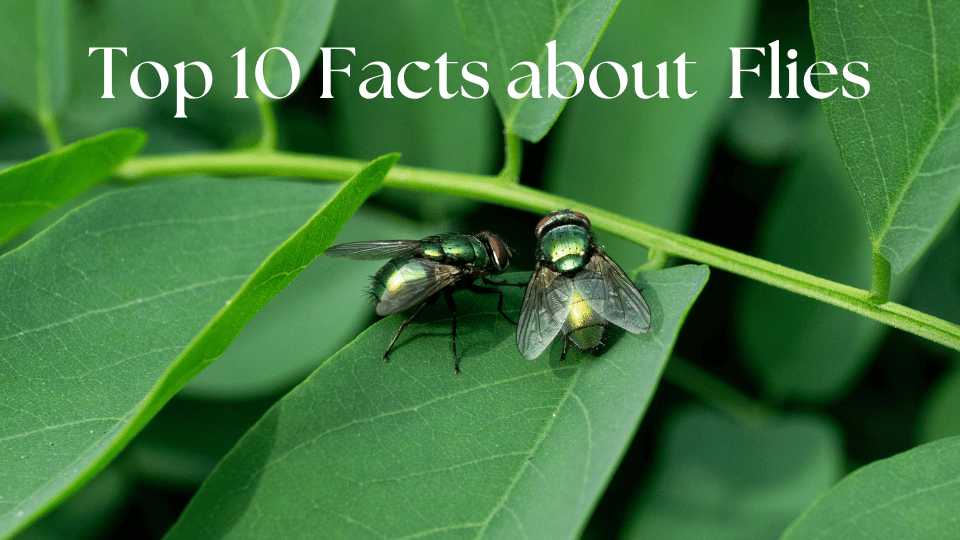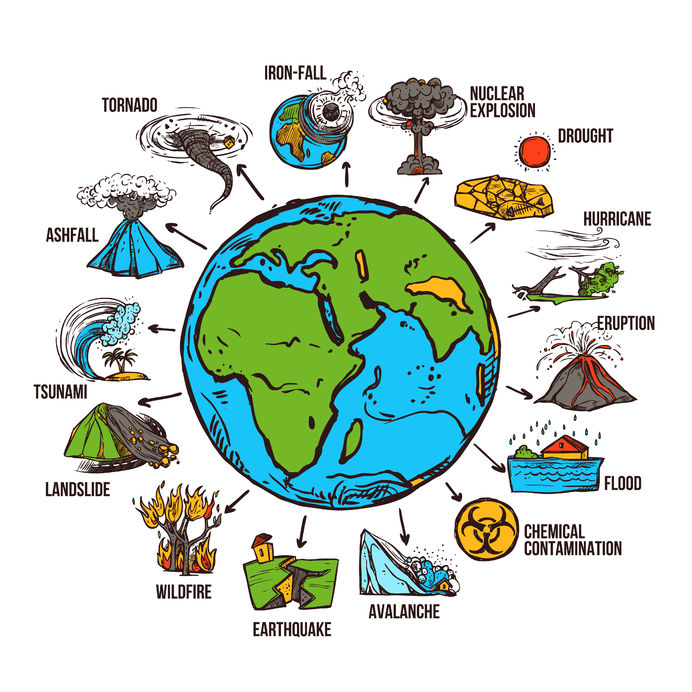Flies can be very annoying and bother you more than anyone else. Some interesting facts about flies will amaze you when you notice their style of feeding, breeding, and living, so let’s take a look at them:

Flies are small insects that belong to the order Diptera. People can find them everywhere, from bustling cities to remote forests. Despite their size, flies play important roles in ecosystems and can be both helpful and annoying to humans.
Life Cycle and Anatomy
Flies undergo a complete metamorphosis, which means they have four distinct stages: egg, larva (maggot), pupa, and adult. The adult fly has two wings, compound eyes, and mouthparts adapted for feeding on liquids. Tiny hairs cover their bodies, aiding them in detecting their surroundings.
Diverse Species
There are thousands of fly species, each with its own unique characteristics. Some common types include houseflies, fruit flies, and horseflies. Human habitats often attract houseflies, while overripe fruits attract fruit flies. Horseflies, on the other hand, feed on blood and can be quite bothersome.
Ecological Roles
Flies serve as pollinators for various plants, helping them reproduce. They also play a crucial role in nutrient cycling because they break down organic matter. Maggots, for instance, consume decaying material, recycling nutrients back into the soil. Additionally, flies are a food source for birds, spiders, and other insects.
Pest or beneficial?
While some flies are beneficial, others are considered pests. Houseflies, for example, can transmit diseases by landing on food and surfaces after visiting garbage or feces. To control houseflies, proper sanitation and waste management are essential. On the other hand, hoverflies are beneficial because their larvae feed on aphids, protecting crops.
The Buzzing Sound
Flies are known for their distinctive buzzing sound. The rapid movement of their wings produces this noise. Interestingly, different fly species have unique wing patterns, resulting in varying frequencies of buzzing. The sound can be annoying, especially when you’re trying to enjoy a peaceful moment outdoors.
Fly traps and repellents
To keep flies away, people use various methods. Fly traps, such as sticky ribbons or electric zappers, capture them. Natural repellents like citronella candles or essential oils can also deter flies. However, prevention is key: sealing food containers, cleaning up spills promptly, and maintaining a clean environment can reduce fly infestations.
In conclusion, flies may be small, but their impact is significant. These insects contribute to our ecosystems’ delicate balance from pollination to decomposition. So next time you see a fly buzzing around, remember that it’s part of a complex web of life!

Top Facts About Flies
Flies don’t have mouthparts that are necessary for chewing or biting food, so they survive on a liquid diet, especially the common housefly.
Flies can taste by using their legs, as they have taste receptors beneath their legs that are called chemonsensilla.
Flies can defecate anywhere and anytime as they consume more liquid. That’s why flies are responsible for spreading many diseases and infections.
Houseflies can easily walk on any type of surface.
Flies can rotate their eyes at 360-degree angles, which means they can see behind themselves.
A housefly can lay 1,000 eggs or more, and it takes 10 days in the hatching process.
The lifespan of a common housefly is 30–40 days.
A fly has two pairs of wings that help them fly and balance.
Flies don’t have teeth, but they have a big tongue that helps them in sucking.
Some flies suck blood and nectar, but houseflies only like the food we eat.
Most flies stay active during the day and less active at night, just like humans.
Flies can spread disease because, throughout the day, they feed and sit on different objects and foods that contain bacteria. Due to this, they can easily spread these bacteria to humans.
Male houseflies are always looking for a female mate, and they mate whenever they get the chance.
FAQs
How many species of flies exist?
Over 100,000 species of flies live on Earth.
Where do flies lay their eggs?
Flies lay their eggs on various surfaces, including fruit, food, other animals, and even rotting flesh.
What are fly larvae called?
Fly larvae are known as maggots. They resemble small bits of rice.
Do flies have teeth?
No, flies don’t have teeth. Instead, they use a long tongue known as a proboscis to suck up food like a straw.
How many wings do flies have?
Unlike most flying insects, which have four wings, flies have two wings. They can fly in various directions, including up, down, side to side, and even backward.
What makes flies stick to surfaces?
Flies have hairy, sticky feet, allowing them to adhere to almost any surface. They can even walk across ceilings.
Remember, flies play important roles in ecosystems, but they can also be pests. To effectively manage fly populations, proper prevention and sanitation are essential.





